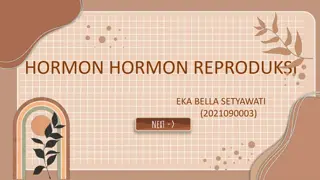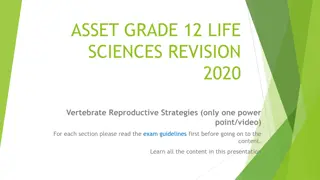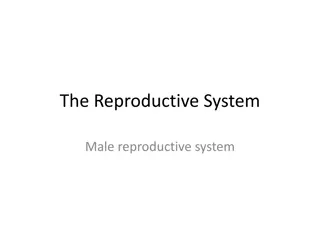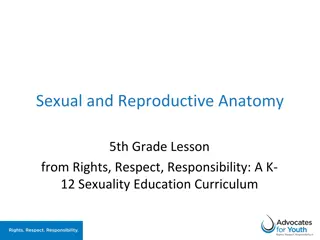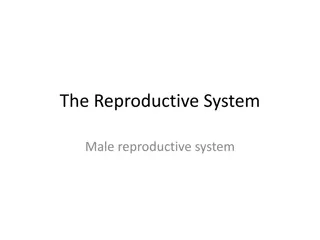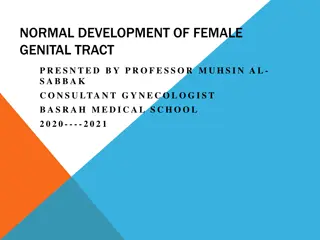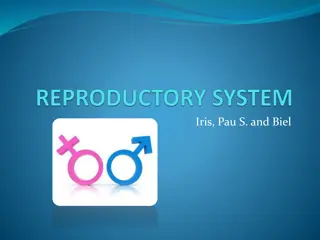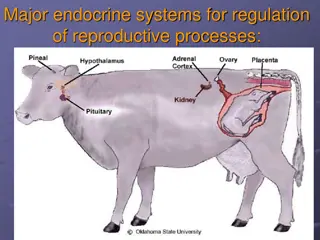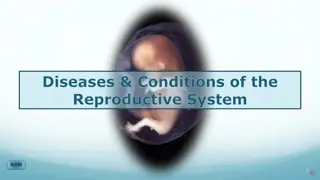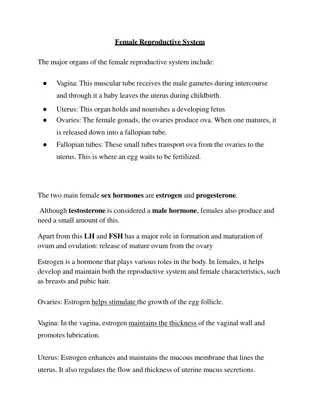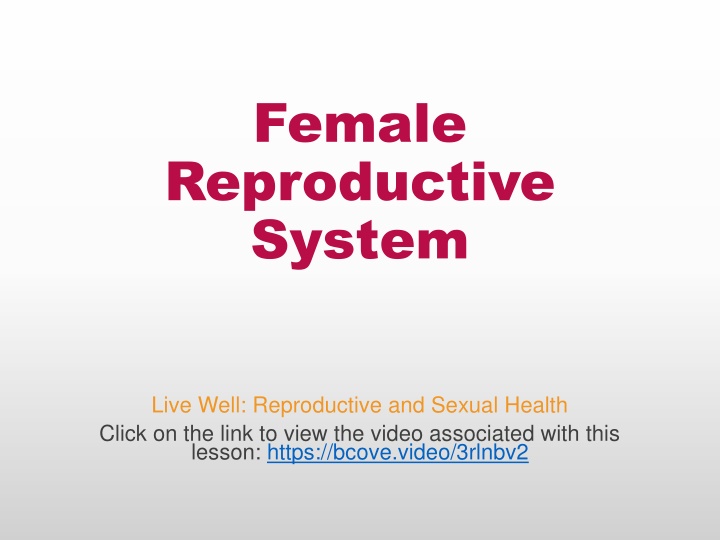
Understanding Female Reproductive System: Organs, Functions, and Care
Explore the internal and external parts of the female reproductive system, their functions, the importance of care, the menstrual cycle, breast self-exams, and common disorders. Learn about the purpose and key organs involved in female reproduction, and discover tips for maintaining reproductive health.
Uploaded on | 2 Views
Download Presentation

Please find below an Image/Link to download the presentation.
The content on the website is provided AS IS for your information and personal use only. It may not be sold, licensed, or shared on other websites without obtaining consent from the author. If you encounter any issues during the download, it is possible that the publisher has removed the file from their server.
You are allowed to download the files provided on this website for personal or commercial use, subject to the condition that they are used lawfully. All files are the property of their respective owners.
The content on the website is provided AS IS for your information and personal use only. It may not be sold, licensed, or shared on other websites without obtaining consent from the author.
E N D
Presentation Transcript
Female Reproductive System Live Well: Reproductive and Sexual Health Click on the link to view the video associated with this lesson: https://bcove.video/3rlnbv2
Write About It Name five female reproductive organs and briefly describe the function of each.
Can You . . . explain the function of each internal and external part of the female reproductive system? assess the purpose of the female reproductive system? explain how to care for the female reproductive system? describe the menstrual cycle? discuss the importance of a monthly breast self- exam? differentiate between the different diseases and disorders of the female reproductive system?
Internal Female Reproductive Anatomy Females are born with all the ova they will ever have. Each ovary contains immature ova. Ovaries produce the hormones progesterone and estrogen. Fallopian tubes are long narrow tubes that attach to each ovary and carry the ovum from the ovary to the uterus. The uterus is where the fetus develops during pregnancy. The endometrium is the lining of the uterus. The cervix is the opening between the uterus and the vagina. The vagina is the narrow passageway between the cervix and the outside of the body. It is used for sexual intercourse.
External Female Reproductive Anatomy The external anatomy is referred to as the vulva. The mons pubis is fatty tissue that covers the pubic bone. The labia majora and labia minora protect the opening of the urethra and vagina. The clitoris is the responsive sexual organ similar to the penis in males with regard to its sensitivity when stimulated.
Purpose of the Female Reproductive System To produce the sex hormones estrogen and progesterone and to transport ova for fertilization to occur. Estrogen helps regulate the menstrual cycle. Progesterone prepares the endometrium for a potential pregnancy after ovulation.
Diseases and Disorders of the Female Reproductive System (1 of 2) Premenstrual syndrome (PMS) is a combination of symptoms that can affect women physically, emotionally, and behaviorally usually, one to two weeks before their period begins. Endometriosis is a condition that happens when the tissue that normally lines the inside of the uterus grows outside the uterus. Uterine fibroids are tumors made up of muscle cells and tissues that grow within and outside the uterus. (continued)
Diseases and Disorders of the Female Reproductive System (2 of 2) Cervical cancer occurs in the cells of the cervix and is often caused by HPV (human papillomavirus), a sexually transmitted disease. Endometrial cancer / uterine cancer begins in the endometrium of the uterus. Breast cancer forms in the cells of the breast and can form in both men and women but is most common in women.
Caring for the Female Reproductive System Sexually active females should have regular checkups with a gynecologist. After urinating, females should wipe from front to back; this will keep bacteria from the vagina or anus from getting into the urethra, which can cause a urinary tract infection. Showering daily keeps the external reproductive organs clean, especially during menstruation. Breast exams should be done monthly to check for unusual lumps in the breast and discharge from the nipples.
Breast Self-Examination Steps 1. In the shower, check each breast separately with the pads of the three middle fingers by firmly pressing down checking the entire breast and armpit area. Check for lumps, knots, or any other breast changes. 2. In front of a mirror, visually check the breasts with arms at the sides, raised overhead, and with hands on hips. Look for changes in shape, swelling, dimpling of the skin, or changes in the nipples. 3. Lying down, place a pillow under the shoulder of the breast being examined with that same arm behind the head. With the opposite hand move the pads of the fingers around the breast and armpit checking for lumps. Squeeze the nipple to check for discharge and lumps.
Menstrual Cycle (1 of 2) Menstrual cycle or period is a hormonal process the female body goes through each month to prepare for a possible pregnancy. Menstrual cycle has four stages and lasts an average of 28 days with the menstrual flow lasting about 5 days: Stage 1 endometrium will shed and is expelled, which is the menstrual flow that takes place during days 1 through 5. Stage 2 the ovum matures, and progesterone is secreted by the ovary, which is necessary for pregnancy. The endometrium thickens, and the uterus prepares for ovulation during days 6 through 12. Stage 3 ovulation is the release of an ovum from one of the ovaries into one of the fallopian tubes during days 13 and 14. Stage 4 the ovum has been fertilized and moves from the fallopian tube and attaches to the endometrium during days 15 through 28. If ovum has been fertilized, it moves from the fallopian tube and attaches to the endometrium. If ovum has not been fertilized, it will disintegrate, and the endometrium will shed and be expelled. (continued)
Menstrual Cycle (2 of 2)
Skill-Building Challenge Choose a disease or disorder found in this lesson and find at least two valid and reliable resources by answering the questions on the worksheet. Using the reliable resources you found, create a public service announcement, social media post, or flyer explaining the disease or disorder, how it is contracted or if it is genetic, signs and symptoms, and how it can be cured or controlled. Share your creation with the school or on social media, if possible.


